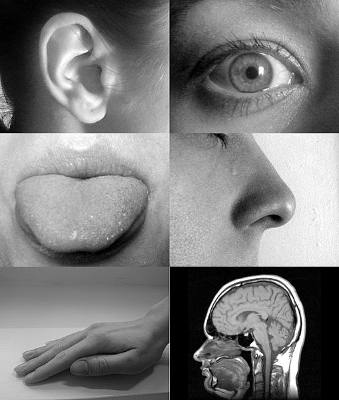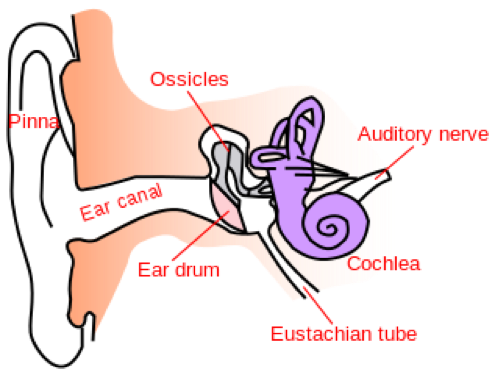This section is an introduction to what hearing is and how your ears and your brain work together to hear sound. By the end of this section you should be able to:
Hearing is one of your senses. You are using your hearing sense when you hear sounds and voices. Other senses include sight (seeing), touch, taste and smell. Each of your senses can be used to tell you something different about the world around you. Different body parts are used for different senses; these specialized body parts are called sense organs. You use your eyes to see, your ears to hear, your nose to smell, your tongue to taste, and your skin to feel touch. But there is one more part of your body that is the most important organ for using your senses – your brain!

The five basic senses are: hearing, sight, taste, smell, and touch. Different organs (parts of your body) use each sense: you hear with your ears, you see with your eyes, you taste with your tongue, you smell with your nose, and you touch with your skin. Your ears, eyes, tongue, nose, and skin are all connected to your brain by nerves. Nerves work like wires that connect different parts of the body so they can send messages to each other.
When you use your senses you are actually using your brain! All of your sense organs sense the world around you and send messages to your brain. Different parts of your brain receive messages from your body for each of your different senses. When your brain receives these messages, then you know something about the world around you by what your body is hearing, seeing, tasting, smelling, and touching.

To hear you use your ears and your brain! First, sound travels through the air to your ears. There are many sounds all around us every day: people talking, music playing, dogs barking, airplanes flying, and many, many more sounds. Once sound reaches your ear, it travels through your ear canal (the hole you can see in your ear) to your eardrum. Sound makes your eardrum vibrate, which then makes tiny bones move. Those tiny bones, or ossicles, carry the vibration to a part of your ear called the cochlea. Inside the cochlea, there are special structures called “hair cells” that change the vibration into a message that nerves can carry from your ear to your brain. The nerves from your ear carry messages to a special part of your brain made just for hearing. When your brain gets these messages, then you “hear” the sound. Your brain is able to hear and understand a wide range of sounds. More importantly, your brain can tell the difference between these different sounds so that you know what is making the sound.
